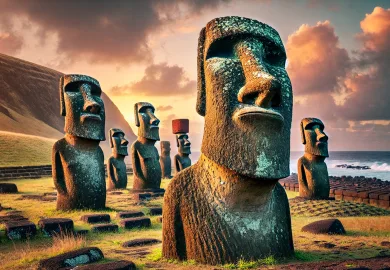
Victorian fashion in Europe is often synonymous with elegance, modesty, and elaborate detail, reflecting the social changes and technological advancements of the 19th century. The reign of Queen Victoria (1837-1901) saw drastic transformations in clothing, driven by the cultural values and industrialization of the time. The impact of Victorian-era fashion on Europe was profound, with its influence still present in modern designs today. This article will explore the key elements that defined Victorian fashion, the evolution of styles throughout the period, and the societal implications of these intricate designs.
The Hallmarks of Victorian Fashion: Corsets, Crinolines, and Bustles
The quintessential Victorian fashion style is characterized by several iconic elements, including corsets, crinolines, and bustles. These features not only shaped the physical silhouette of Victorian women but also reflected the societal values of modesty and femininity.
Corsets were a staple of Victorian fashion, designed to cinch the waist and enhance the hourglass figure. Made from materials like whalebone or steel, these undergarments were both restrictive and a symbol of status. A tightly laced corset signified wealth and leisure, as only the affluent could afford to dress in impractical clothing that limited mobility.
The crinoline was another essential garment in Victorian style, giving skirts their voluminous shape. Made from horsehair and later steel hoops, crinolines allowed skirts to flare out dramatically, emphasizing a narrow waist. By the 1850s, the crinoline had become widely popular across Europe, a symbol of elegance and social status.
As fashion evolved during the Victorian era, the bustle replaced the crinoline in the late 1860s and 1870s. This padded undergarment created volume at the back of the skirt, giving women an exaggerated silhouette that emphasized the hips and waist. The rise and fall of these garments over the course of the Victorian period reflect changing tastes in Victorian women’s fashion.
Evolution of Victorian Fashion Trends Over the Decades
The Victorian era fashion underwent significant changes, marked by distinct phases that reflected both the evolving social landscape and technological advancements.
In the early part of Queen Victoria’s reign, fashion was heavily influenced by Romanticism. Victorian dresses from the 1840s were modest, with high necklines, long sleeves, and full skirts. Women favored dark colors like black, brown, and navy, which were often accessorized with delicate lace and ribbons.
By the mid-19th century, the Industrial Revolution had introduced new fabrics and sewing techniques, making Victorian clothing more accessible to the masses. The rise of the middle class also contributed to changes in fashion, as more people could afford to participate in the trends once reserved for the aristocracy. During this period, brighter colors, bolder patterns, and lavish embellishments became more popular.
Toward the end of the Victorian era, fashion trends became even more elaborate, with ornate trimmings, ruffles, and fringes adding layers of detail to gowns. The introduction of synthetic dyes also revolutionized Victorian fashion, allowing for vivid hues that were previously unattainable. However, by the 1890s, Victorian style shifted towards a more streamlined silhouette, with slimmer skirts and less emphasis on the bustle. This transition marked the beginning of modern fashion trends, as Victorian fashion gave way to the styles of the Edwardian era.
The Influence of Victorian Men’s Fashion in Europe
Although Victorian fashion is often associated with women’s clothing, Victorian men’s fashion also played a significant role in defining the era’s style. Men’s fashion during the Victorian period was formal and structured, reflecting the societal norms of respectability and propriety.
Early in the Victorian era, men’s attire consisted of frock coats, waistcoats, and trousers. The frock coat was a knee-length, double-breasted jacket worn over a waistcoat, usually paired with a top hat for formal occasions. This look was a staple of 19th-century men’s fashion and reflected the stiff, conservative nature of the time.
As the century progressed, men’s fashion became slightly more relaxed, with the introduction of the morning coat, a less formal alternative to the frock coat. This coat had a curved front, allowing men more freedom of movement. The three-piece suit became a popular trend in the later decades of the Victorian period, consisting of a matching jacket, waistcoat, and trousers, a style that would continue into the 20th century.
Accessories were also an essential part of Victorian men’s fashion. Pocket watches, cravats, and gloves were common, as they added a touch of elegance and sophistication to a man’s outfit. Much like women’s fashion, men’s clothing during the Victorian era was a symbol of social standing, with wealthier men dressing in finer fabrics and more elaborate garments.
The Role of Social Class in Victorian Fashion and Dress Codes
One of the most significant aspects of Victorian fashion was how it reflected the wearer’s social status. The upper and middle classes adhered to strict dress codes that signaled their wealth and position within society, while the working class had its own set of more practical and affordable clothing.
For the upper classes, Victorian clothing was an expression of luxury. Elaborate gowns made from silk, velvet, and lace were common, and wealthy women could afford multiple dresses for different occasions. Evening wear was particularly extravagant, featuring low necklines, off-the-shoulder designs, and copious amounts of jewelry. Men in the upper classes also dressed to impress, wearing finely tailored suits, high-quality fabrics, and formal accessories.
In contrast, the middle class, while aspiring to mimic the fashion of the upper classes, opted for more affordable and practical versions of these garments. As their economic status improved during the Victorian era, they gained access to ready-made clothing, thanks to advancements in textile production. This democratization of fashion allowed more people to participate in the trends of the time, even if on a smaller scale.
The working class, however, had limited access to the luxurious materials and elaborate designs of upper-class Victorian fashion. Their clothing was functional, made from durable fabrics like cotton and wool. Women typically wore simple dresses and aprons, while men donned trousers, shirts, and waistcoats. Despite the simplicity of their attire, the working class still adhered to the era’s emphasis on modesty, with women often wearing high necklines and long skirts.
The legacy of Victorian fashion in Europe continues to inspire designers and fashion enthusiasts today. The emphasis on elegance, modesty, and intricate detail has left an indelible mark on the world of fashion, with modern-day adaptations of Victorian-style clothing making appearances on runways and in everyday wear. Whether through the romanticization of corsets or the revival of ruffles and lace, the influence of the Victorian era remains timeless.








